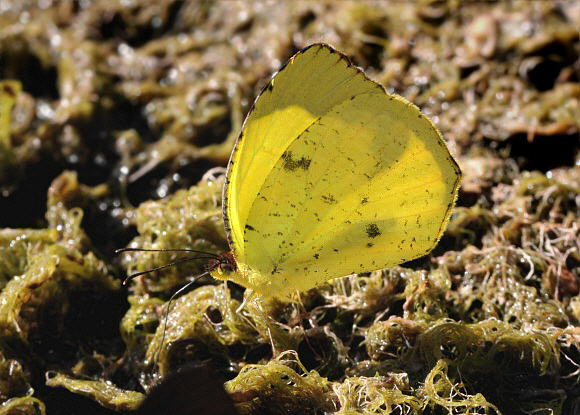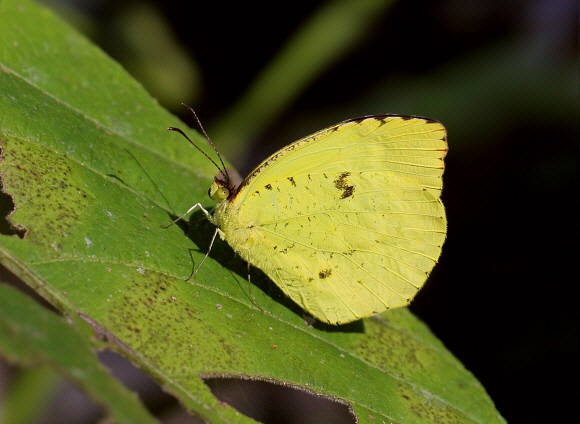
Introduction
The genus Eurema was until fairly recently represented in the neotropics by about 30 species, but several have now been reclassified as Pyrisitia, leaving a total of 19 currently recognised species in the neotropical region. Elsewhere in the world the genus has 9 species in Africa, 2 in Madagascar, and 9 in the Oriental and Australian regions.
These smallish butterflies are characterised by having yellow or white uppersides, with dark apical markings. The forewings have a strongly curved costa and a squarish apex. The hindwings are rounded in most species, but in salome, xantochlora and arbela the termen is projected to a point.
The various species can be told apart by the pattern of mottled dark markings on the underside hindwings, and by the black borders on the upperside forewings, which differ according to species.
Eurema salome is variable regarding the width of the black borders on the upperside, and in the extent of the brownish mottling on the underside hindwings. There are 6 named subspecies, found variously from Mexico to Peru. The illustrated race is Eurema salome salome, which occurs in the eastern Andes of Peru and Ecuador.
Habitats
This is a pre-montane cloudforest species, occurring along roadsides, riverbanks and forest edge habitats at elevations between about 300-2000m.
Lifecycle
The eggs have only been recorded on Fabaceae. Other Eurema species oviposit on Mimosaceae, Caesalpinaceae and Simaroubaceae, as well as Fabaceae, so it is possible that these families could be utilised also by salome. The eggs are laid singly on the underside of the leaves.
Eurema larvae are typically dull green, with a whitish line along the sides, and a rough texture. The pupae of Eurema are typically pale green or yellowish, and have a prominent keel, but I have no data specific to salome.
Adult behaviour
Males are usually encountered singly, or occasionally in two’s or three’s, seen imbibing dissolved minerals from damp ground at the edge of ditches, runnels or roadside banks in forested areas.
Females are more often seen nectaring at flowers along roadsides and riverbanks, or when exploring sunny wood edge habitats in search of egg-laying sites.
The flight is fluttery but fairly rapid, and always close to the ground.

